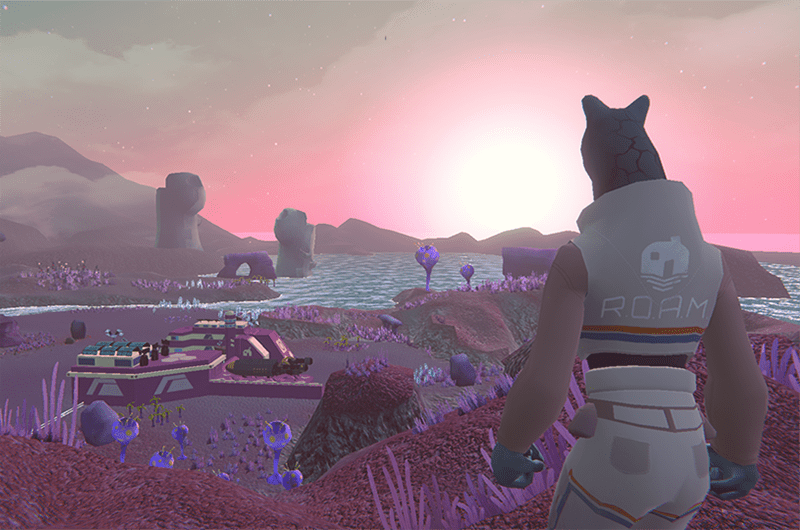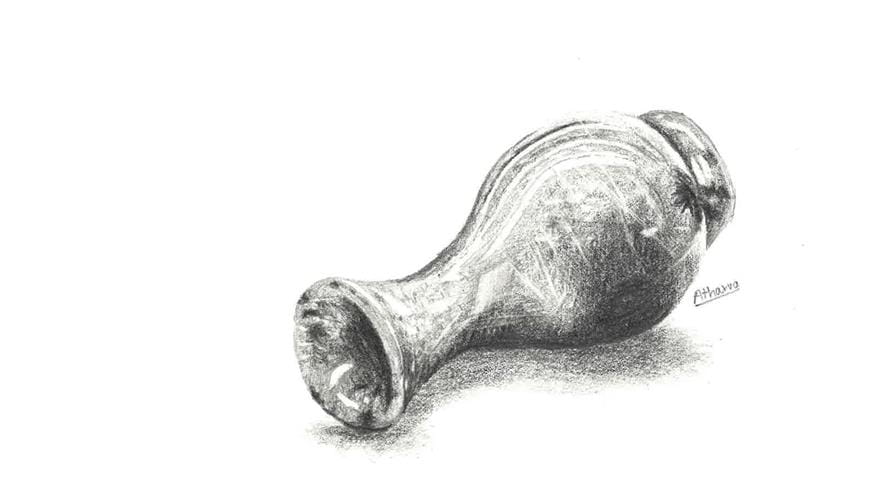Drexel Senior Capstone Gamifies the Refugee Crisis for Good

What are some things that a privileged individual from a first world country may think about when considering important components of a successful refugee camp? Shelter? Check. Medical care? Check. Food and water? Check.
Phone charging stations? Maybe not, especially to charge the devices of a four-eyed, cat-like alien population arriving to a refugee camp in space.
But it is these lessons about the day-to-day needs and struggles of those on the forefront of the refugee crisis that “Resilience” — an award-winning, socially conscious city builder computer game brought to life through a senior capstone project at Drexel University and the student team behind Sungrazer Studio — aims to teach players, albeit through a sci-fi veneer heavily grounded in real-world research.
It was that moment of learning about the importance of phone chargers in refugee camps on Earth during the research phase of the project that stuck out to Lily Lauben, a 2020 custom-design graduate in serious game design, and really encapsulated a major point the students hope their game teaches.
“You think of refugees as being so different from you and coming from such different circumstances, but they have phones too, and their phones have all of their photos from home and their memories,” Lauben said. “That's how they keep in touch with one another in camps. And so, having a phone charger, having a place to charge phones, is so important to them. … It just humanized them a lot and in a way that I had never personally thought about.”
There was a lot about the refugee crisis that this team — comprised of students from multiple majors within the Westphal College of Media Arts & Design, the College of Computing & Informatics (CCI) and the Pennoni Honors College — had to think about to make their game as realistic and impactful as possible. They also balanced this with making the game engaging and palatable, most notably through their decision to set it in space.
Inspired by playing a lot of Frostpunk, Lauben came up with the initial concept of the game being a refugee camp city builder, but made a much different vision for the game before compiling and speaking about it with her team.
“I pitched it as, ‘Yeah, we'll have this game take place in Syria,’” Lauben remembered, “and the team was like, ‘Whoa, whoa, whoa, no.’”
Instead, they decided to formulate “Resilience” into a sci-fi game both because abstracting the refugee crisis would make it more palatable for players, and because dreaming up a whole new world and alien species would make things more exciting for the game artists to work on.
Alex Gallegos, BS game design ’20 who served as technical director for the project, said it also became a big design point to keep the “Murian” refugees, though abstracted, “within the frame of the human experience.”
“We designed our alien species in a way that allowed the player to really empathize with them, or we tried to,” he said. “We wanted to make them look appealing and personable — both visually, but also in terms of their experience. So when you talk to them, they have a really broad range of lines that they'll say and a lot of the lines are very relatable to the everyday person, and a lot of them are inspired by refugee stories from various articles or other sources that we came across.”
The student game designers made clear that as college students, they weren’t trying and would never be able to encapsulate the entire refugee crisis with “Resilience.” But one thing that is clear from the game design is that the refugee characters are no different from the character the first-person players embody, who in the game serves as a humanitarian aid working who must make decisions about managing the camp’s monthly budget, constructing facilities to maintaining the wellbeing of a refugee population.
“If you look down in the game, you have the same hands as them. You are one of them,” Gallegos said. “They're not a different species that you have to contend with, but they're rather like your brothers and sisters.”
Although the game morphed greatly from its original inception, the team that helped bring Lauben’s idea to life consisted of game designers, programmers, developers and even audio designers from Westphal’s Music Industry Program. It is typical for students from across multiple digital-media-based disciplines to come together for a senior capstone project like this, although the “Resilience” team stoked huge ambitions for their game, and even got started on it two full terms ahead of when they were required to.
Tony A. Rowe, assistant teaching professor for Game Design & Production in Westphal who co-mentored the “Resilience” team alongside Jeff Salvage, teaching professor of Computer Science in CCI, said he would normally tell a senior project team like this to shy away from taking on something at the scope these students wanted their game to be.
“But I knew a lot of these students and they were well organized, creative and could really handle some difficult tasks,” Rowe said, adding that he had worked with several of them earlier in their Drexel careers as part of the University’s Entrepreneurial Game Studio, for which he is a technical mentor. “I knew if anybody could handle a project this size, this team probably could, and they did.”
Lauben said, and Rowe agreed, that it is also atypical for Drexel game design students to focus on a serious game for their capstone, the term applied to the subgenre of games designed for a primary purpose other than pure entertainment, like those for education, health care and city planning. However, these types of games can give players a deeper understanding of issues than other less-interactive mediums.
“That's a big advantage, I think, that serious games have. They can show you the inner workings of a complex system through an engaging simulation that you have some control and input into,” Rowe said. “You can immediately see how your decisions affect that system.”
The themes touched on in “Resilience,” plus its execution about the ability to shed light on and spread empathy for a pervasive humanitarian crisis, earned the students an important accolade from the premiere serious-game competition, the Games for Change Awards. “Resilience” won “Best Student Game” at the 2020 awards ceremony on July 14. For Lauben, it was an “indescribable” moment.
“They were like a huge source of inspiration to me when I was writing up my major proposal and remained a huge source of inspiration as I continued to make games throughout college,” she said of Games for Change. “Just being a finalist, I was star struck, and the fact that we won the final award [was indescribable].”
Game Design & Production Program Director Robert Lloyd had encouraged the team to apply for the Games of Change Award, as he knew both the project and the team were strong candidates.
“I have been coordinating Digital Media senior projects for five years and “Resilience” is one of the best-run projects I have seen,” Lloyd said. “The students delivered a thoughtful submission that obviously made an impact on the judges.”
Though their project requirements — and even their time at Drexel — have already come to an end, the project leaders continue to build on the awareness and connections from the big win to find new opportunities for “Resilience.” They have released the game on Itch.io, a major game distribution platform, and they still aspire to create partnerships to bring the game into high school and college classrooms.
For now, you can download “Resilience” from the Sungrazer Studio website and Itch.io, and keep an eye out for the future projects to come from these exemplary students in their careers.
“I'm certain that that entire team has a bright future in game development,” Rowe said. “They're fantastic.”
Drexel News is produced by
University Marketing and Communications.
